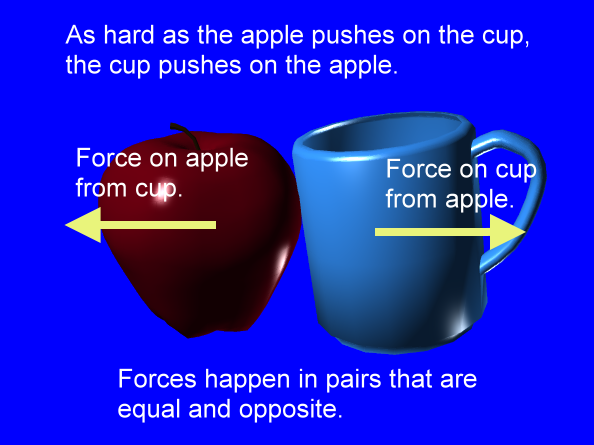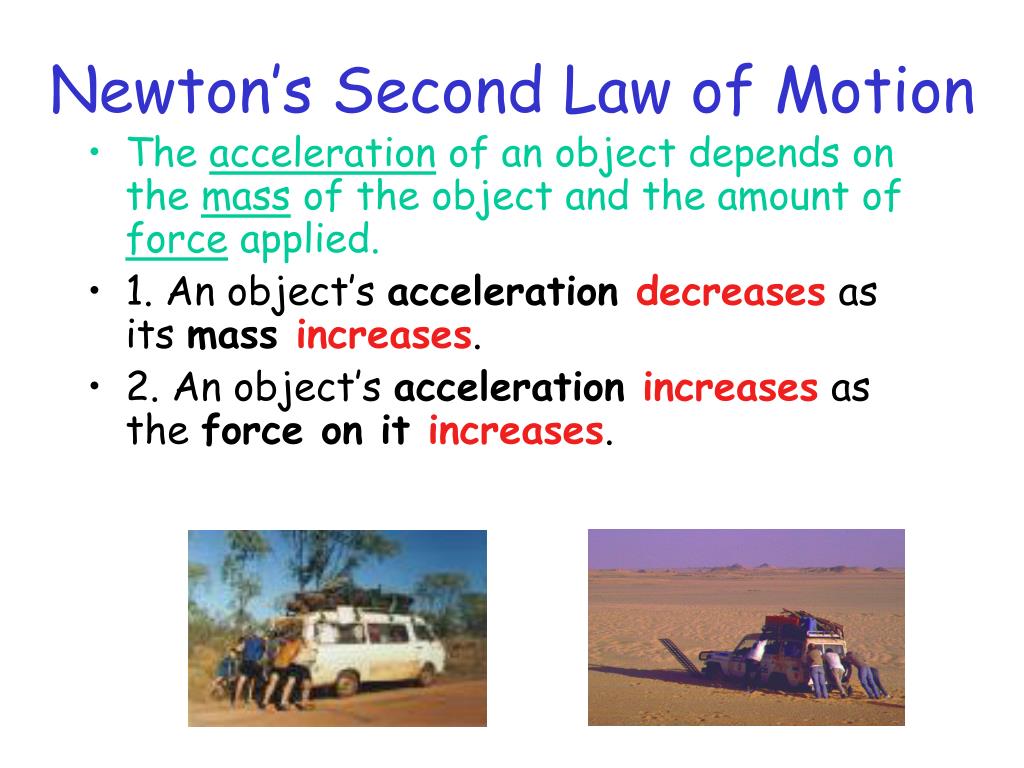

This force occurs because the weight of the book causes the table to deform slightly so that it pushes back on the book like a coiled spring. According to the third law, the table applies an equal and opposite force to the book. For example, a book resting on a table applies a downward force equal to its weight on the table. The forces it describes are real ones, not mere bookkeeping devices. This law is important in analyzing problems of static equilibrium, where all forces are balanced, but it also applies to bodies in uniform or accelerated motion. The third law is also known as the law of action and reaction. Newton’s third law states that when two bodies interact, they apply forces to one another that are equal in magnitude and opposite in direction. Newton’s third law: the law of action and reaction Conversely, if a body is not accelerated, there is no net force acting on it. If a body has a net force acting on it, it is accelerated in accordance with the equation. For a body whose mass m is constant, it can be written in the form F = m a, where F (force) and a ( acceleration) are both vector quantities. Newton’s second law is one of the most important in all of physics. A force applied to a body can change the magnitude of the momentum or its direction or both. Momentum, like velocity, is a vector quantity, having both magnitude and direction. The momentum of a body is equal to the product of its mass and its velocity. It states that the time rate of change of the momentum of a body is equal in both magnitude and direction to the force imposed on it. Newton’s second law is a quantitative description of the changes that a force can produce on the motion of a body. Learn how immovable objects and unstoppable forces are the same © MinutePhysics ( A Britannica Publishing Partner) See all videos for this article
SECOND LAW OF NEWTON HOW TO
COVID-19 Portal While this global health crisis continues to evolve, it can be useful to look to past pandemics to better understand how to respond today.Student Portal Britannica is the ultimate student resource for key school subjects like history, government, literature, and more.From tech to household and wellness products. Britannica Explains In these videos, Britannica explains a variety of topics and answers frequently asked questions.This Time in History In these videos, find out what happened this month (or any month!) in history.#WTFact Videos In #WTFact Britannica shares some of the most bizarre facts we can find.

Demystified Videos In Demystified, Britannica has all the answers to your burning questions.Britannica Classics Check out these retro videos from Encyclopedia Britannica’s archives.The purpose of this laboratory exercise is to verify Newton's second law.

Since the force of friction is opposite to the direction of travel, this acceleration causes the object to slow its forward motion, and eventually stop. According to Newton's second law an object will accelerate in the direction of the net force. This force causes the ball to decelerate (that is, it has a "negative" acceleration). The key is that the ball does experience an outside force, i.e., friction, as it rolls across the floor. But Aristotle was wrong, as is our first impression of the ball's motion. Our experience seems to agree with Aristotle's idea, that the "impetus" given to the ball is used up as it rolls. If we roll a ball across the floor, we know that it will eventually come to a stop, seemingly contradicting the First Law. Newton's first law states that any object at rest that is not acted upon by outside forces will remain at rest, and that any object in motion not acted upon by outside forces will continue its motion in a straight line at a constant velocity. The first law seems to be at odds with our everyday experience. His three laws of motion are the best known of these. Lab 3 - Newton's Second Law Introduction Sir Isaac Newton put forth many important ideas in his famous book The Principia.


 0 kommentar(er)
0 kommentar(er)
